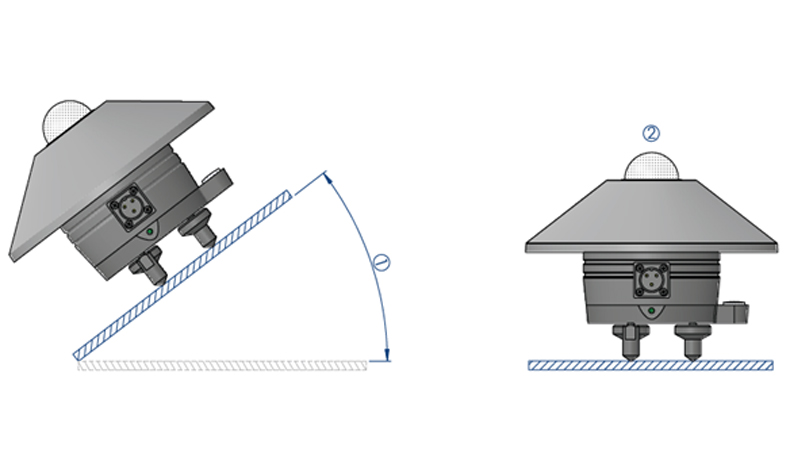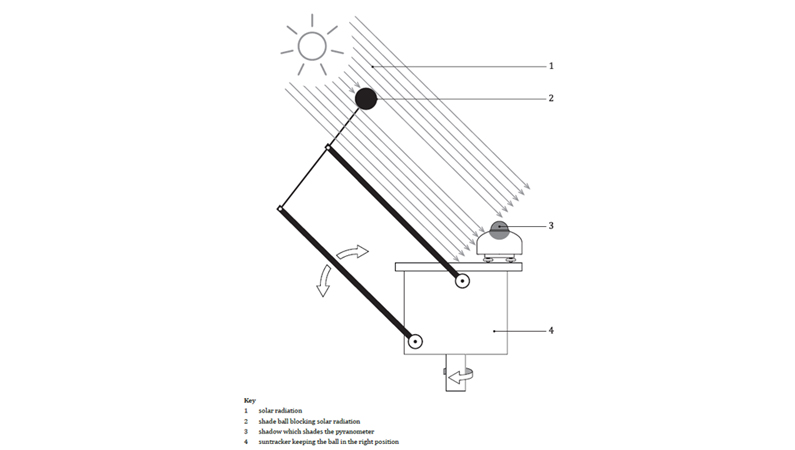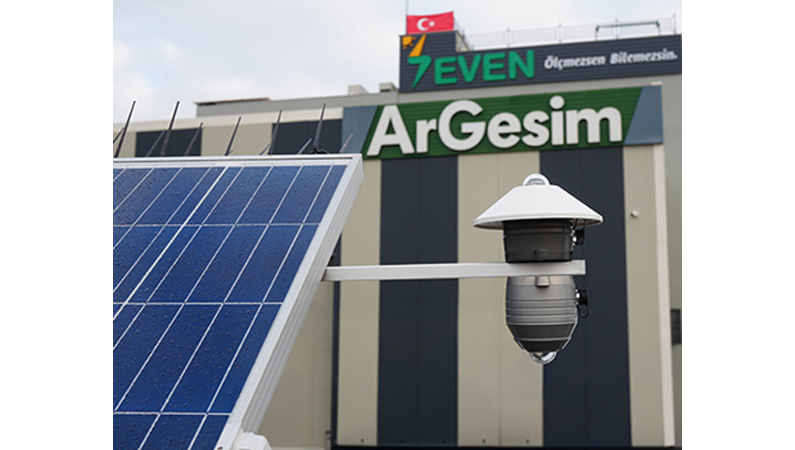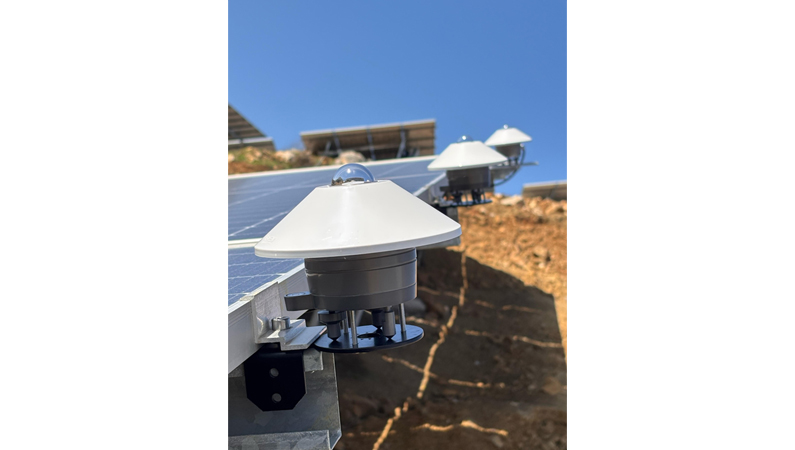The ISO/TR 9901:2021 standard provides comprehensive guidelines for the use of pyranometers in solar energy applications. Accurate irradiance measurements are crucial for improving the efficiency of solar energy systems and conducting reliable performance evaluations. This article focuses on the proper use and installation of pyranometers for measuring Global Horizontal Irradiance (GHI), Plane of Array Irradiance (POA), and Reflected Irradiance (RI), based on excerpts from ISO/TR 9901:2021.
Pyranometers Measuring Global Horizontal (GHI), Plane of Array (POA) and Global Tilt (GTI) Irradiance
According to the ISO/TR 9901:2021 standard:
Figure 2 – (2) Global Horizontal Irradiance (GHI) is measured using a pyranometer mounted horizontally.
Figure 2 – (1) Plane of Array Irradiance (POA) is measured using a pyranometer mounted on an inclined plane.
Figure 2 – (1) Global Tilted Irradiance (GTI) is the measurement of solar irradiance on a surface tilted at a specific angle from the horizontal, using a pyranometer.
In all cases, the sensor surface should be parallel to the respective plane. An inclined pyranometer also detects irradiance reflected from the ground. If a spectrally flat pyranometer compliant with ISO 9060 is used, the same calibration can be applied to both GHI and POA measurements. However, if non-spectrally flat devices are used, spectral corrections may be required, particularly under cloudy conditions.
Many solar power plants use pyranometers for both GHI and POA measurements. According to the IEC 61724-1 standard, this is mandatory for Class A monitoring systems. GHI is often the starting point for modeling solar plant performance. GHI also serves as a reference for comparison with other sites or meteorological databases and does not include contributions from ground-reflected irradiance.

Pyranometers Measuring (1) POA and GTI (2) GHI
While GTI refers to the irradiance received on any tilted surface, POA (Plane of Array Irradiance) specifically refers to the irradiance received on the surface of a photovoltaic (PV) panel. POA is a concept very similar to GTI, but it is used specifically in the context of PV systems. Unlike GTI, POA typically represents the irradiance measured directly on the surface of a PV module or solar collector.
Pyranometers Measuring Diffuse Irradiance
According to the ISO/TR 9901:2021 standard:
To measure diffuse irradiance, direct sunlight must be blocked from reaching the sensor. This is done using a shading device, which can be a metal disk or sphere. The pyranometer is usually mounted horizontally, and shading devices can be manually operated or attached to automatic sun-tracking systems. Rotating shading bands are also used.
According to ISO 9060:2018, a pyranometer used with a shading device is referred to as a diffusometer. If the pyranometer has a glass dome, the shading device is typically designed to cover the entire dome.
If a spectrally flat pyranometer is used, the same calibration as global horizontal irradiance measurements can be applied. For non-spectrally flat devices, an individual uncertainty assessment may be required, and a diffuse spectrum-specific calibration might be considered.

High accuracy diffuse irradiance measurement according to ISO/TR 9901:2021
Pyranometers Measuring Reflected Irradiance (RI)
According to the ISO/TR 9901:2021 standard:
Reflected irradiance is measured using an inverted pyranometer (mounted facing downward). Reflected horizontal irradiance (RHI) is directly linked to GHI, and this relationship is expressed through albedo (ground reflectance).
There are two main approaches to measuring reflected irradiance:
- Some solar energy studies install inverted pyranometers on the plane of the array to measure rear-side POA irradiance (POAREAR).
- Others derive POAREAR values using mathematical modeling based on open-field RHI (Reflected horizontal irradiance) measurements or measurements taken between solar panel arrays.
Uncertainty in reflected irradiance measurements often arises from spatial variability in ground surfaces and shading patterns. Users may conduct field studies to measure albedo, as ground properties change due to seasonal variations, vegetation cover, or snow.
For high-accuracy applications, spectrally flat pyranometers are commonly used. If a spectrally flat pyranometer is employed, the same calibration as horizontal irradiance measurements can be applied.
When performing RI measurements on inclined surfaces, measurements should be taken on a representative slope. However, if GHI measurements are not taken at the same inclination, GHI values may include reflected irradiance, potentially increasing GHI measurements while reducing albedo calculations.
Factors such as dew, frost, and contamination generally pose fewer problems for downward-facing sensors.

Pyranometers Measuring Reflected Irradiance
